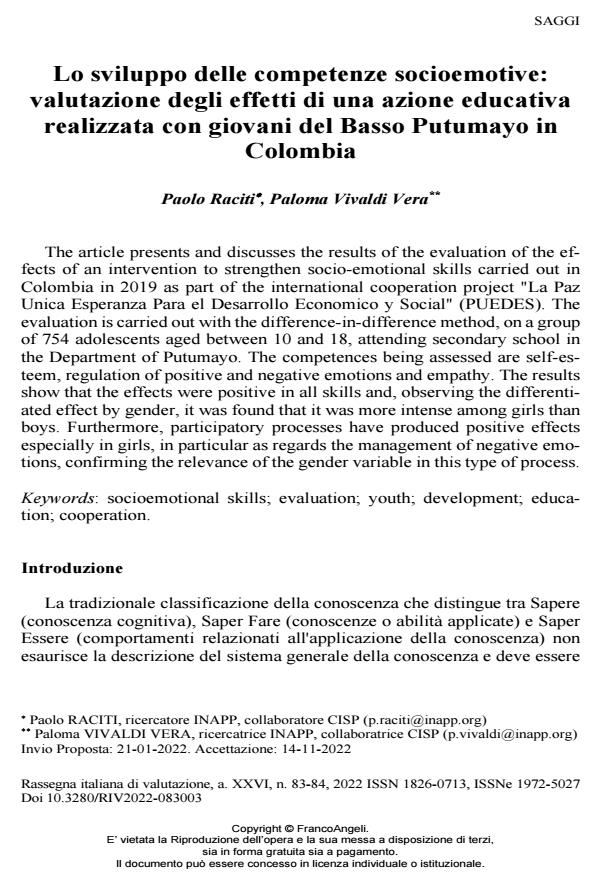Lo sviluppo delle competenze socioemotive: valutazione degli effetti di una azione educativa realizzata con giovani del Basso Putumayo in Colombia
Titolo Rivista RIV Rassegna Italiana di Valutazione
Autori/Curatori Paolo Raciti, Paloma Vivaldi Vera
Anno di pubblicazione 2023 Fascicolo 2022/83-84
Lingua Italiano Numero pagine 32 P. 24-55 Dimensione file 421 KB
DOI 10.3280/RIV2022-083002
Il DOI è il codice a barre della proprietà intellettuale: per saperne di più
clicca qui
Qui sotto puoi vedere in anteprima la prima pagina di questo articolo.
Se questo articolo ti interessa, lo puoi acquistare (e scaricare in formato pdf) seguendo le facili indicazioni per acquistare il download credit. Acquista Download Credits per scaricare questo Articolo in formato PDF

FrancoAngeli è membro della Publishers International Linking Association, Inc (PILA)associazione indipendente e non profit per facilitare (attraverso i servizi tecnologici implementati da CrossRef.org) l’accesso degli studiosi ai contenuti digitali nelle pubblicazioni professionali e scientifiche
The article presents and discusses the results of the evaluation of the effects of an intervention to strengthen socio-emotional skills car-ried out in Colombia in 2019 as part of the international cooperation project "La Paz Unica Esperanza Para el Desarrollo Economico y So-cial" (PUEDES). The evaluation is carried out with the difference-in-difference method, on a group of 754 adolescents aged between 10 and 18, attending secondary school in the Department of Putumayo. The competences being assessed are self-esteem, regulation of positive and negative emotions and empathy. The results show that the effects were positive in all skills and, observing the differentiated effect by gender, it was found that it was more intense among girls than boys. Furthermore, participatory processes have produced positive effects especially in girls, in particular as regards the management of negative emotions, confirming the relevance of the gender variable in this type of process.
Parole chiave:socioemotional skills; evaluation; youth; development; edu-cation; cooperation.
Paolo Raciti, Paloma Vivaldi Vera, Lo sviluppo delle competenze socioemotive: valutazione degli effetti di una azione educativa realizzata con giovani del Basso Putumayo in Colombia in "RIV Rassegna Italiana di Valutazione" 83-84/2022, pp 24-55, DOI: 10.3280/RIV2022-083002